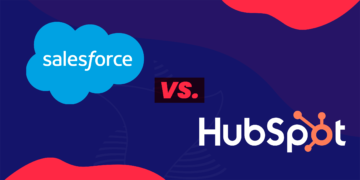As you may know from our Summer’22 Release about marketing and commerce article, Pardot, one of Salesforce’s marketing automation tools, was formerly renamed Marketing Cloud Account Engagement. This change simplifies how we refer to Marketing Cloud, aligning everyone from customers to partners and even internal teams about the naming conventions in this cloud.
Marketing Cloud (MC) was made of “studios” and “builders” and some add-ons that maintained their original name after Salesforce acquired them. So, refining all functionalities’ names to facilitate how we discuss the products was the final goal. Also, there’s no left space for the mispronunciation of Pardot’s name.
Pardot is made to drive productivity between the marketing and sales teams, automating journeys for high-quality leads and cutting costs by optimising marketing touch points. For now, Marketing Cloud Account Engagement remains precisely the same as Pardot; only the name and some minor things changed. In the demo video below, let’s dive a bit to understand MCAE and what it can do for your company and your ABM strategy.
If you’re curious to know what will be the main differences, stick with us. Get to read the table of contents for this article below:
- What is changing?
- The benefits of Account Engagement (formerly Pardot) becoming Marketing Cloud
- MC Account Engagement vs MC Engagement
1. What is changing?
1.1. B2B vs B2C
The split between Pardot as a B2BMA and Marketing Cloud, on the other hand, as a B2C tool, lasted for years. This was due to Pardot being better suited for considered purchases, although Pardot had a lot of B2C customers and Marketing Cloud a lot of transactional B2B customers.
With this renaming, it’s a bit easy to understand that this split is real and being reinforced. The Account Engagement will enable to work close to Marketing Cloud, bringing the B2B and B2C boxes together.
1.2. Product Architecture
Pardot has been passing around from Marketing Cloud to Sales Cloud, and now again into Marketing Cloud.
While the name of Pardot is now a part of the Marketing Cloud org, Pardot’s architecture, such as data models, are totally separate from Marketing Cloud’s. Pardot is more integrated with the Salesforce core platform actually.
If you use the Pardot-Salesforce connector, the term “Account Engagement” might seem a bit confusing. Pardot usually worked with lead and contact objects, and account object was read-only.
1.3. The terms “account” and “engagement”
The term “engagement” is the new umbrella for comms in Marketing Cloud and it’s now incorporated into Pardot’s new name.
On the other hand, “account” term refers to ABM strategies, and no one is sure if these ABM features are being included in the platform.
For now, Marketing Cloud Account Engagement is a product launched as a B2BMA tool, adding agility and accuracy into your campaigns; an email marketing tool, ready to use without any prior knowledge of HTML; lead scoring and grading, making it easy to highlight leads and understand opportunities; and lately, a marketing ROI tool, accurately determining the ROI of each marketing activity.
2. The benefits of Pardot becoming Marketing Cloud
There are plenty of times when you need to link your Account Engagement (formerly Pardot) activities to your Advertising (formerly Advertising Studio) ones, or even Intelligence (formerly Datorama), to align your email marketing efforts.
The integration of Pardot in Marketing Cloud can help marketers understand which tool to use for account-based marketing and omni-channel marketing activities. It will allow teams to better deliver seamless and consistent service for potential and existing customers, with a more unified feel of the tools.
Also, sales and marketing teams might need to combine Marketing Cloud Engagement and Account Engagement, and also Sales Cloud to reach their goals.
3. MC Account Engagement vs MC Engagement
Although their names are pretty similar, Account Engagement and Engagement are two parts of Marketing Cloud a bit distinct but can work through some different marketing activities. Let’s overview the table below to understand the main differences on the included features:
|
MC Account Engagement |
MC Engagement |
|
Top of funnel |
Journey builder |
|
Lead management |
Mobile messaging |
|
Lead nurturing |
Advertising studio |
|
Scoring and grading |
Multi-channel communication |
| Sales enablement |
Data segregation |
But also, there are some features that are similar between the two: e-mail marketing, marketing automation, forms and landing pages, web tracking and basic social. And there are cases where your marketing strategy demands complex multi-channel messaging, or even a combination of lead scoring with advertising activities – and that’s when you should use both as complementary.
Now that you know a bit more about what Marketing Cloud Account Engagement, dive more into the marketing automation world with us. We got plenty of useful content you can enjoy. Also, don’t forget to subscribe to our Knowledge Center!
SUBSCRIBE KNOWLEDGE CENTER
Subscribe for free to our Knowledge Center to get the latest articles straight to your inbox!







